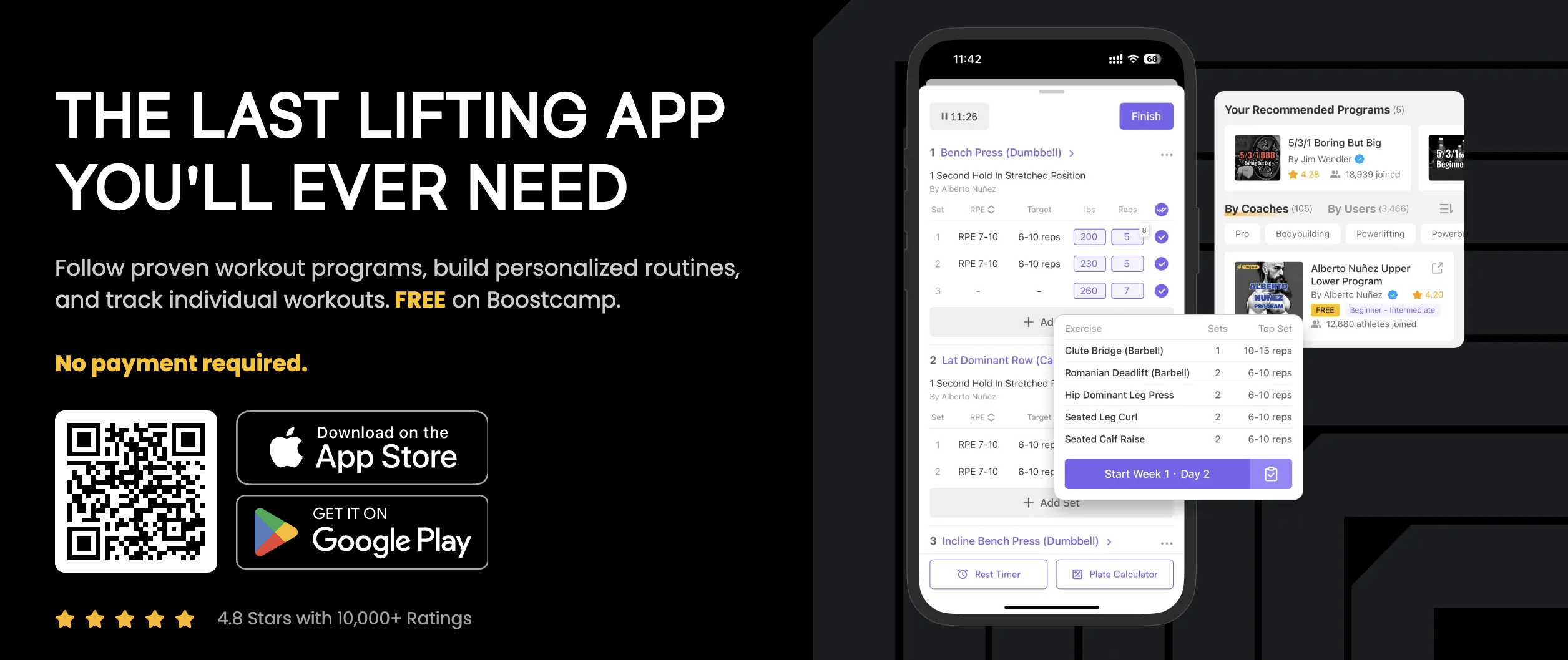How to do the Arnold Press
Written by The Boostcamp Editors
Blow up your shoulders
The Arnold Press, named after famous bodybuilder and Mr. Olympia winner, Arnold Schwarzenegger, is a highly effective shoulder exercise that really hammers the deltoids while also engaging other upper body muscles, such as the triceps. This highly popular compound movement helps improve shoulder strength, stability, and size; so whether you are training for a hypertrophy based sport like bodybuilding, or a strength based sport like powerlifting, the Arnold Press can be beneficial. However, to get the most out of the exercise you are going to want to perform it with proper form and good weights, so how can you make sure that you are doing it correctly?
Our team at Boostcamp has put together a comprehensive guide to performing the Arnold Press safely and effectively.
Breaking Down the Arnold Press

Image courtesy of khornate_gains
Let’s take a look at all things involved in the Arnold Press.
Muscles Worked
Primary: Anterior deltoid, lateral deltoid
Secondary: Triceps brachii, trapezius, rotator cuff muscles
Benefits
Builds overall shoulder strength and size.
Increases range of motion due to the rotational movement.
Improves stability in the shoulder joint.
Enhances functional strength, aiding in daily activities and other exercises that involve pressing movements.
Can be modified for different fitness levels, making it a versatile choice for all athletes.
Equipment Needed
Dumbbells (light to moderate weight for beginners).
A bench with back support (optional for seated Arnold Press).
How to Properly Perform the Arnold Press
Starting Position:
Stand or sit upright with your back straight and feet shoulder-width apart. If seated, ensure your back is supported.
Hold a dumbbell in each hand at shoulder height with palms facing your body (neutral grip). Your elbows should be bent, and the dumbbells should be close to your chest.
Execution:
Initial Press: Exhale and begin pressing the dumbbells upward. As you press, rotate your wrists so your palms face forward at the top of the movement.
Full Extension: Extend your arms fully overhead without locking your elbows.
Controlled Descent: Inhale and slowly lower the dumbbells back to the starting position, rotating your wrists so your palms face inward toward your chest.
Key Tips:
Maintain a controlled tempo; avoid jerky or fast movements.
Keep your core engaged to stabilize your spine.
Avoid excessive arching of your lower back.
Use a weight that allows proper form throughout the exercise.
Focus on smooth and deliberate wrist rotation to maximize muscle engagement and prevent strain.
Common Mistakes to Avoid With the Arnold Press
Overarching the Back: Engage your core and keep your spine neutral to prevent strain.
Using Momentum: Perform the movement in a slow, controlled manner to maximize muscle engagement.
Incorrect Wrist Rotation: Ensure smooth wrist rotation to avoid strain and achieve full range of motion.
Elbows Flaring: Keep your elbows in line with your body during the movement.
Lifting Too Heavy: Using excessive weight can compromise form and increase the risk of injury. Prioritize proper form over heavier loads.
Variations of the Arnold Press
Seated Arnold Press: Provides more stability by reducing the involvement of the lower body.
Single-Arm Arnold Press: Enhances unilateral strength and balance.
Resistance Band Arnold Press: A low-impact option that is ideal for beginners or rehabilitation.
Kettlebell Arnold Press: Adds a unique challenge to stability and grip strength.
Half-Kneeling Arnold Press: Engages the core more intensely and promotes balance.
How Many Sets and Repetitions Should You Do?
Beginners: 3 sets of 10-12 reps with light weight.
Intermediate: 3-4 sets of 8-10 reps with moderate weight.
Advanced: 4 sets of 6-8 reps with heavier weight, maintaining proper form.
Safety Tips
Warm up thoroughly before starting with dynamic shoulder stretches and light cardio.
Stop if you experience pain or discomfort in the shoulders.
Gradually increase the weight as your strength improves.
Ensure your workout area is clear of obstructions to prevent accidents.
Pay attention to shoulder mobility and flexibility to avoid stiffness and maintain proper range of motion.
Cool-Down
After completing the Arnold Press, perform static stretches for your shoulders, chest, and arms to improve flexibility and reduce muscle soreness.
Examples of stretches:
Cross-body shoulder stretch.
Overhead triceps stretch.
Doorway chest stretch to open up the shoulders and chest.
Workout Programs
When it comes to incorporating the Arnold Press into your workouts, finding a good workout program is the key. Boostcamp can be your last stop when it comes to finding a program, as there are over 50 free workout programs that are written by some of the top coaches, all geared towards helping you progress and crush your goals.
If you don't want a pre-written program, then Boostcamp's Program Creator feature is the way to go, as you can customize a program exactly to your liking,
Regardless, Boostcamp allows you to Track all of your workouts.
Wrap Up
By incorporating the Arnold Press into your workout routine, you can build stronger, more defined shoulders while enhancing overall upper body strength. Prioritize proper form and consistency for the best results. With dedication, this exercise can become a cornerstone of your strength training program!
Be sure to follow Boostcamp on Instagram and subscribe on Youtube!

Header image courtesy of molinagfit

